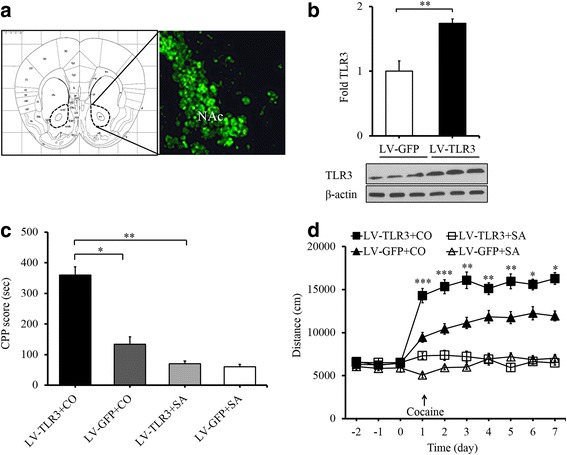Fig. 4.

Restoring TLR3 expression in the NAc reverts deficits in cocaine-induced behavior. a Lentiviral vector LV-TLR3 expression in the nucleus accumbens. The left of the schematic diagram indicates the injection site of nucleus accumbens. b Intra-NAc injection of LV-TLR3 increases TLR3 expression in WT mice. **p < 0.01, n = 3/LVGFP group, n = 3/LVTLR3 group. (c) TLR3 re-expression in the NAc markedly increases the preference for cocaine (20 mg/kg) in comparison to TLR3-knockout mice expressing LV-GFP, *p < 0.05, **p < 0.01, n = 10/LVTLR3+CO group, n = 10/LVTLR3+SA group, n = 10/LVGFP+CO group, n = 10/LVGFP+SA group. d Group mean total distance traveled in centimeters during the 15 mins after cocaine administration every day (20 mg/kg/day). *p < 0.05, **p < 0.01, ***p < 0.001, n = 14/LVTLR3+CO group, n = 11/LVTLR3+SA group, n = 14/LVGFP+CO group, n = 11/LVGFP+SA group. Cocaine (CO), saline (SA). Data are presented as the mean ± SEM
